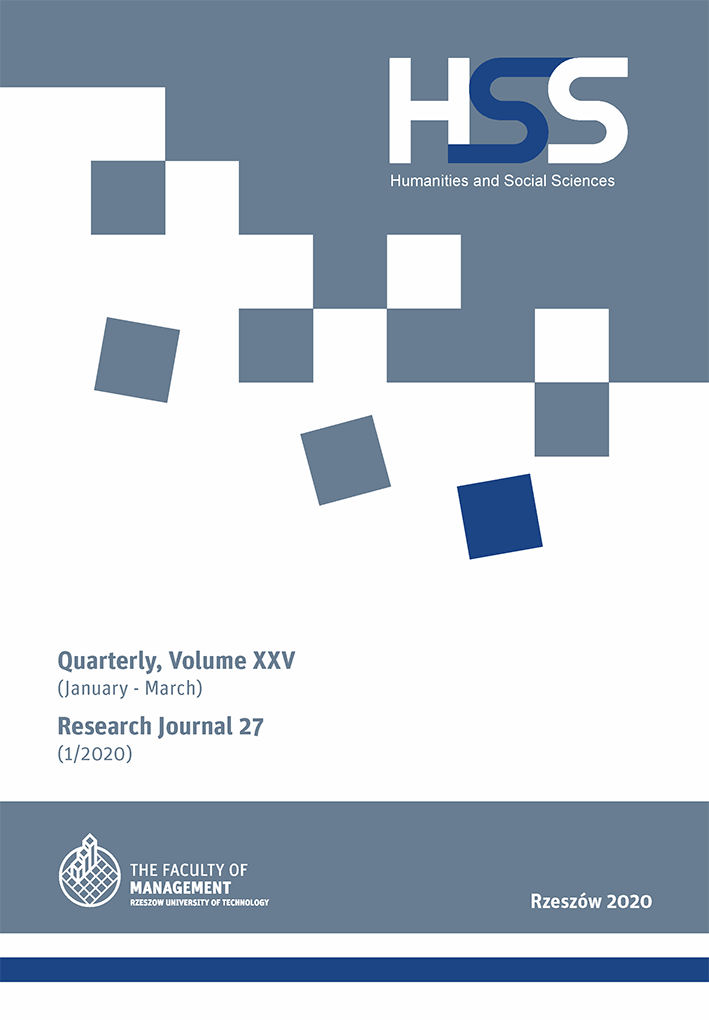Abstract
The security policy of the Russian Federation has long created threats and imposed its will on Russia’s neighbors and other nations. In recent times, Russia uses the concepts of hybrid warfare to move conflicts and crises to neighboring countries without political consequences or an outright violation of international law. The use of hybrid war methods in relation to Ukraine proved to be partially effective and showed Russia’s will and capabilities to run such operations. These tactics circumvent possible engagement of the NATO and European Union (EU) members in enforcing international consequences and implementation of Article V of the Washington Treaty. The aim of the article is to analyze the hybrid warfare concept employed by Russia, its methods and impact on NATO and United States policy in all political aspects of the modern world. Moreover, the present article aims to present the perception of that concept by western nations. Study methods include a critical analysis and synthesis of reliable sources within the research. This study supports a deeper understanding of the complexity of the hybrid warfare model, and allows for the reader to draw practical conclusions on how to combat hybrid warfare by a single nation and multinational organizations.
References
Cordesman, A. (2014). Russia and the ‘Color Revolution. Center for Strategic and International Studies, May 28. Access on the internet: https://www.csis.org/analysis/russia-and-%E2%80%9Ccolor-revolution%E2%80%9D.
Galeotti, M. (2016). Moscow’s Mercenaries in Syria. “War on the Rocks”, April 05. Access on the internet: http://warontherocks.com/2016/04/moscows-mercenaries-in-syria/.
George F. Kennan on Organizing Political Warfare, April 30, 1948, History and Public Policy Program Digital Archive, Wilson Centre. Access on the internet: http://digitalarchive.wilsoncenter.org/document/114320.pdf?v=941dc9ee5c6e51333ea9ebbbc9104e8c.
Giles, K. (2016). Russia’s ‘New’ Tools for Confronting the West Continuity and Innovation in Moscow’s Exercise of Power. London: The Royal Institute of International Affairs Chatham House, March.
Harding, J. (2016). Russia’s Perception Warfare – The development of Gerasimov doctrine in Estonia and Georgia and its application in Ukraine. “Wordpress.com”, June 22. Access on the internet: https://toinformistoinfluence.com/2016/06/22/russias-perception-warfare-the-deve-lopment-of-gerasimovs-doctrine-in-estonia-and-georgia-and-its-application-in-ukraine/
Hoffman, F. (2009). Hybrid Warfare and Challenges. “The Joint Forces Quarterly” issue 52, National Defense University Press, Washington 1st quarter 2009.
Joint Operating Environment JOE 2035. Washington: Joint Force Development J7, July 14, 2016.
Keynote Speech by NATO Secretary General Jens Stoltenberg at the opening of the NATO Transformation Seminar I. Access on the internet: NATO Website, May 19, 2015, http://www.nato.int/cps/en/natohq/opinions_118435.htm.
Kofman, M. (2016). Russian Hybrid Warfare and Other Dark Arts. “War on the Rocks”, March 11. Access on the internet: https://warontherocks.com/2016/03/russian-hybrid-warfare-and-other-dark-arts/.
McDermott, R. (2016a). Gerasimov Calls for New Strategy to Counter Color Revolution. “Eurasia Daily Monitor” Vol. 13, issue 46, March 08. Access on the internet: https://jamestown.org/program/gerasimov-calls-for-new-strategy-to-counter-color-revolution/#.VuFxSfkrLRY.
—— (2016b). Does Russia Have a Gerasimov Doctrine?. Parameters” 46 (1), Carlisle Barracks Spring.
Miller, J. (2016). Putin’s Attack Helicopters and Mercenaries Are Winning the War for Assad. The Foreign Policy March No. 30. Access on the internet: http://foreignpolicy.com/2016/03/30/putins-attack-helicopters-and-mercenaries-are-winning-the-war-for-assad/.
Multiple Futures Project. Navigating Towards 2030. Norfolk: Allied Command Transformation, April.
Opinion piece by NATO Secretary General Jens Stoltenberg. Access on the internet: NATO Website, July 19, 2016, http://www.nato.int/cps/en/natohq/opinions_134210.htm.
Polyakova, A. (2016). Introduction The Kremlin’s Toolkit Of Influence In Europe [in:] Laruelle, M., Barnett, N., Polyakova, A., The Kremlin’s Trojan Horses. Russian Influence in France, Germany, and the United Kingdom. Washington: The Atlantic Council, DINU Patriciu Eurasia Center, November, No. 3.
Popescu, N. (2015). Hybrid tactics: Russia and the West. European Union Institute for Security Studies, Alert Issue 46 October.
Sparks, J. (2016). Revealed: Russia's 'Secret Syria Mercenaries. “Sky News”, August 10. Access on the internet: http://news.sky.com/story/revealed-russias-secret-syria-mercenaries-10529248.
Sun Tzu, The Art of War. Translated by Lionel Giles. Access on the internet: http://classics.mit.edu/Tzu/artwar.html.
The Secretary General’s Annual Report (2016). Brussels: NATO Public Diplomacy Division.
Thomas, T. (2016). Thinking Like A Russian Officer: Basic Factors And Contemporary Thinking On The Nature of War. The Foreign Military Studies Office (FMSO), Fort Leavenworth, April.
Wales Summit Declaration Issued by the Heads of State and Government participating in the meeting of the North Atlantic Council in Wales, September 05, 2014. Access on the internet: http://www.nato.int/cps/en/natohq/official_texts_112964.htm.
Warsaw Summit Communiqué Issued by the Heads of State and Government participating in the meeting of the North Atlantic Council, Warsaw, July 8–9, 2016. Access on the internet: http://www.nato.int/cps/en/natohq/official_texts_133169.htm.
Whole of Government Approaches to Fragile States (2006). Paris: Organisation for Economic Co-Operation and Development.
William, N. (2002). Future war and Chechnya: a case for hybrid warfare. Monterey: Naval Postgraduate School, June.
Внезапная проверка объявлена в трех военных округах, Северном флоте, ВКС и ВДВ (2016). Tass News Agency, August 25. Access on the internet: http://tass.ru/armiya-i-opk/3565111.
Герасимов, B. (2013). Ценность Науки в Предвидении. Новые вызовы требуют переосмыслить формы и способы ведения боевых действий. “Военно-промышленный курьер” No 8 (476), Moscow, February 27. Access on the internet: http://www.vpk-news.ru/articles/14632.
Кофман, М. (2016). Гибридная война, которой нет, «Ведомости» (Vedomosti), April 20. Access on the internet: http://www.vedomosti.ru/opinion/articles/2016/04/20/638380-gibridnaya-voina.
Они сражались за Пальмиру (2016). “Fontanka”, March 29. Access on the internet: http://www.fontanka.ru/2016/03/28/171/.
Царик, Ю (2016). Сивицкий Арсений, Беларусь в контексте противостояния Россия – НАТО. Minsk: Центр стратегических и внешнеполитических исследований, Center for Strategic and Foreign Policy Studies.


